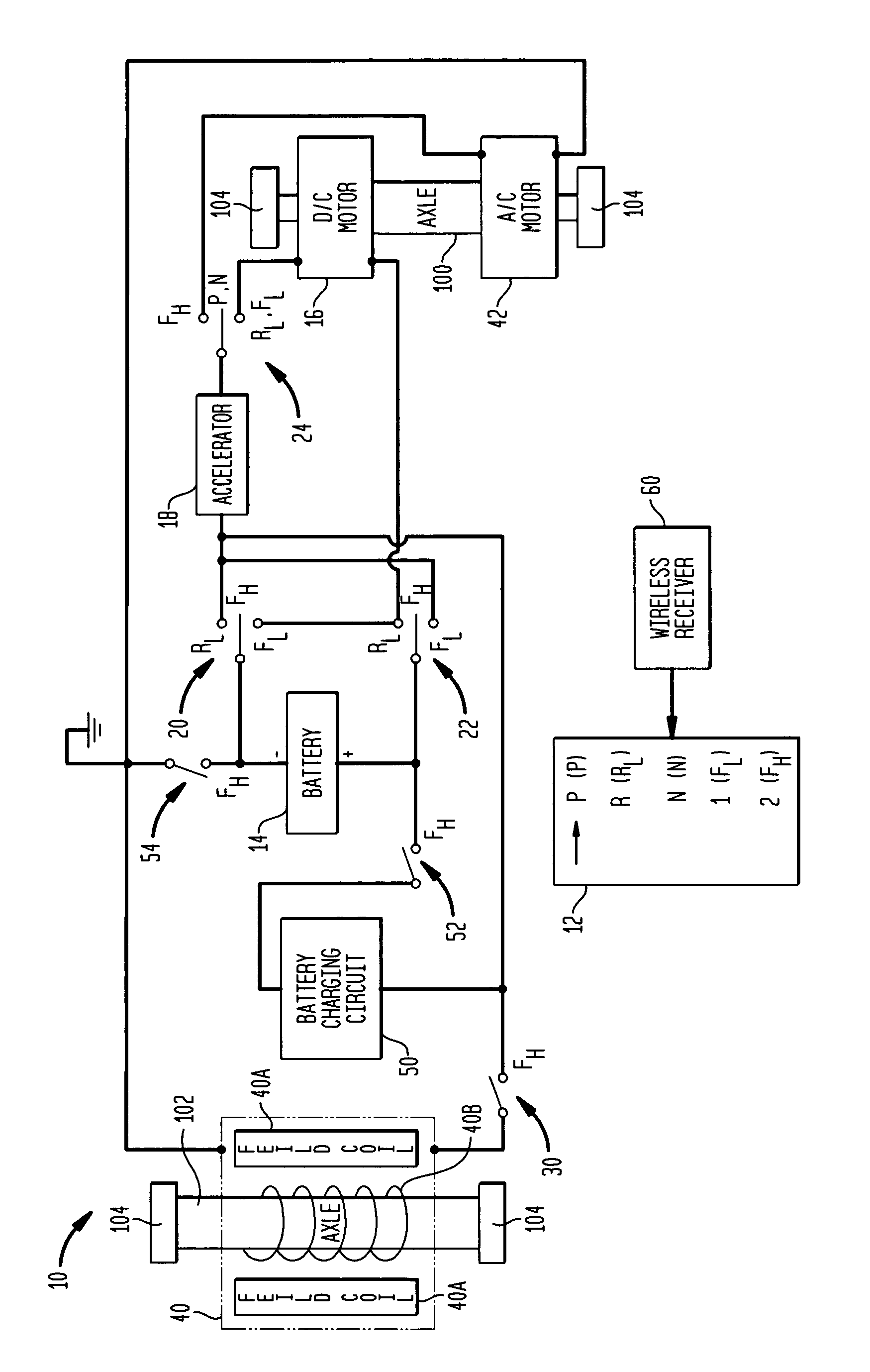AC/DC system for powering a vehicle
a power system and vehicle technology, applied in the direction of electric generator control, dynamo-electric converter control, multiple dynamo-motor starters, etc., can solve the problems of high cost, no “clear choice” replacement for traditional gasoline-powered vehicles, and very well-known associations with gasoline-powered vehicles
- Summary
- Abstract
- Description
- Claims
- Application Information
AI Technical Summary
Benefits of technology
Problems solved by technology
Method used
Image
Examples
Embodiment Construction
[0010]Referring now to the drawings and more particularly to the sole FIGURE, a system for powering a vehicle using DC and AC electrical power is shown and is referenced generally by numeral 10. While system 10 could be adapted for use in a variety of types of vehicles, it is well-suited for land-based vehicles such as passenger automobiles. Accordingly, the present invention will be explained for its use in vehicles that have axles coupled to the vehicle's wheels. By way of example, the present invention is illustrated using two axles 100 and 102 and four wheels 104. However, it is to be understood that the present invention could be used with vehicles having more axles / wheels without departing from the scope of the present invention. For clarity of illustration, operative features of the present invention are divided between the two axles as will be explained further below. However, it is further to be understood that these features could be coupled to a single axle without depart...
PUM
 Login to View More
Login to View More Abstract
Description
Claims
Application Information
 Login to View More
Login to View More - R&D
- Intellectual Property
- Life Sciences
- Materials
- Tech Scout
- Unparalleled Data Quality
- Higher Quality Content
- 60% Fewer Hallucinations
Browse by: Latest US Patents, China's latest patents, Technical Efficacy Thesaurus, Application Domain, Technology Topic, Popular Technical Reports.
© 2025 PatSnap. All rights reserved.Legal|Privacy policy|Modern Slavery Act Transparency Statement|Sitemap|About US| Contact US: help@patsnap.com


